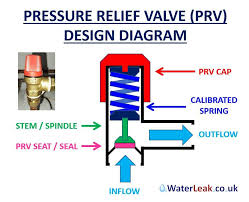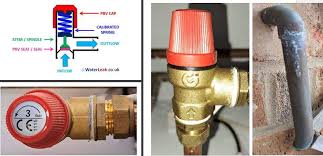Pressure Relief Valve Boiler

The Application of Pressure Relief Valve
Introducing the Worcester Boiler Pressure Relief Valve, an essential component for boiler systems. As a type of pressure relief valve, it ensures safe operation by releasing excess pressure, safeguarding boilers from potential damage or explosions. Specifically designed for Worcester boilers, these valves offer reliable protection, especially in high-pressure situations. The 3 bar pressure relief valve variant provides precise pressure regulation, crucial for maintaining optimal boiler performance. Trust Worcester for innovative solutions in boiler safety, and experience unparalleled reliability and peace of mind with their pressure relief valve offerings.
What Is Pressure Relief Valve?
A pressure relief valve is a crucial safety device designed to protect systems from overpressure by automatically releasing excess fluid or gas. When the pressure within a system exceeds a predetermined limit, the valve opens to relieve the pressure, preventing damage or catastrophic failure. These valves are essential components in various applications, including boilers, where they ensure safe operation by maintaining pressure within safe limits.
How Does Pressure Relief Valve work?
A pressure relief valve operates by monitoring the pressure within a system. When the pressure surpasses a preset threshold, the valve automatically opens to release excess fluid or gas, thereby reducing the pressure to a safe level. This mechanism prevents overpressure situations, safeguarding the system from damage or rupture. Once the pressure returns to normal, the valve closes, restoring the system to its normal operating conditions.
Features of Pressure Relief Valve
- Safety: The primary feature of a pressure relief valve is its ability to ensure system safety by preventing overpressure situations, reducing the risk of equipment damage or failure.
- Automatic Operation: Equipped with automatic functionality, these valves respond to changes in pressure without the need for manual intervention, ensuring continuous protection.
- Adjustable Setpoint: Some valves offer adjustable setpoints, allowing users to customize the pressure threshold at which the valve activates, enhancing flexibility and control.
- Reliability: Known for their reliability, pressure relief valves provide consistent performance and peace of mind, even in challenging operating conditions.
- Versatility: Suitable for a wide range of applications, including boilers, hydraulic systems, and pressure vessels, demonstrating their versatility and adaptability.
- Durable Construction: Constructed from robust materials such as brass or stainless steel, these valves offer durability and longevity in various environments.
- Compact Design: Featuring a compact and space-saving design, pressure relief valves can be easily integrated into existing systems without extensive modifications, enhancing convenience.
Advantages of Pressure Relief Valve
- Safety Assurance: Pressure relief valves ensure the safety of systems and equipment by preventing overpressure situations, reducing the risk of damage or rupture.
- Continuous Protection: These valves offer continuous monitoring and automatic operation, providing constant protection against pressure fluctuations.
- Versatility: Suitable for a wide range of applications, pressure relief valves can be used in various industries, including oil and gas, chemical processing, and manufacturing.
- Reliable Performance: Known for their reliability, pressure relief valves deliver consistent performance even in demanding environments, ensuring uninterrupted operation.
- Cost Savings: By preventing costly equipment damage and downtime, pressure relief valves help save money in the long run, making them a valuable investment for any system.

The Specifications of Pressure Relief Valve
| Specifications | Details |
|---|---|
| Type | Pressure Relief Valve |
| Ball Material | Brass, Stainless Steel, PTFE, etc. |
| Attachment Type | Flanged, Threaded, Welded, etc. |
| Thread Standard | ANSI, DIN, BS, JIS, etc. |
| Thread Size | Various sizes available |
| Body Material | Brass, Stainless Steel, Cast Iron, etc. |
| Safe for Use With | Water, Air, Gas, Steam, etc. |
| Handle Type | Lever, Knob, Wheel, etc. |
| Handle Material | Steel, Aluminum, Plastic, etc. |
| Maximum Working Pressure | Up to specific value (psi/bar) |
| Maximum Working Pressure | Up to specific value (psi/bar) |
| Operating Pressure | Varies based on specifications |
The Parameter of Pressure Relief Valve
- Type: Pressure Relief Valve
- Ball Material: Options include brass, stainless steel, PTFE, etc.
- Attachment Type: Available in various attachment types such as flanged, threaded, welded, etc.
- Thread Standard: Can conform to standards like ANSI, DIN, BS, JIS, etc.
- Thread Size: Comes in various sizes to fit different piping requirements.
- Body Material: Constructed from materials like brass, stainless steel, cast iron, etc.
- Safe for Use With: Suitable for use with water, air, gas, steam, and other compatible fluids.
- Handle Type: Offered with different handle types such as lever, knob, wheel, etc.
- Handle Material: Handles can be made of materials like steel, aluminum, plastic, etc.
- Maximum Working Pressure: Can handle pressures up to a specific value (psi/bar) depending on the model.
- Operating Pressure: Varies based on the specific model and application requirements.
The Operation Theory of Pressure Relief Valve
The operation theory of a Pressure Relief Valve, including Consolidated Pressure Relief Valve and Over Pressure Relief Valve, revolves around maintaining safe pressure levels within a system. When the pressure surpasses a predefined threshold, the valve automatically opens to release excess fluid or gas, thereby reducing the pressure to a safe level. This mechanism prevents overpressure situations, safeguarding the system from damage or rupture. Once the pressure returns to normal, the valve closes, restoring the system to its standard operating conditions. Whether it’s a Consolidated Pressure Relief Valve or an Over Pressure Relief Valve, the principle remains the same, ensuring safety and reliability in various industrial applications.
The Parameters Table of Pressure Relief Valve
| Parameters | Details |
|---|---|
| Type | Pressure Relief Valve |
| Ball Material | Brass, Stainless Steel, PTFE, etc. |
| Attachment Type | Flanged, Threaded, Welded, etc. |
| Thread Standard | ANSI, DIN, BS, JIS, etc. |
| Thread Size | Various sizes available |
| Body Material | Brass, Stainless Steel, Cast Iron, etc. |
| Safe for Use With | Water, Air, Gas, Steam, etc. |
| Handle Type | Lever, Knob, Wheel, etc. |
| Handle Material | Steel, Aluminum, Plastic, etc. |
| Maximum Working Pressure | Up to specific value (psi/bar) |
| Operating Pressure | Varies based on specifications |
